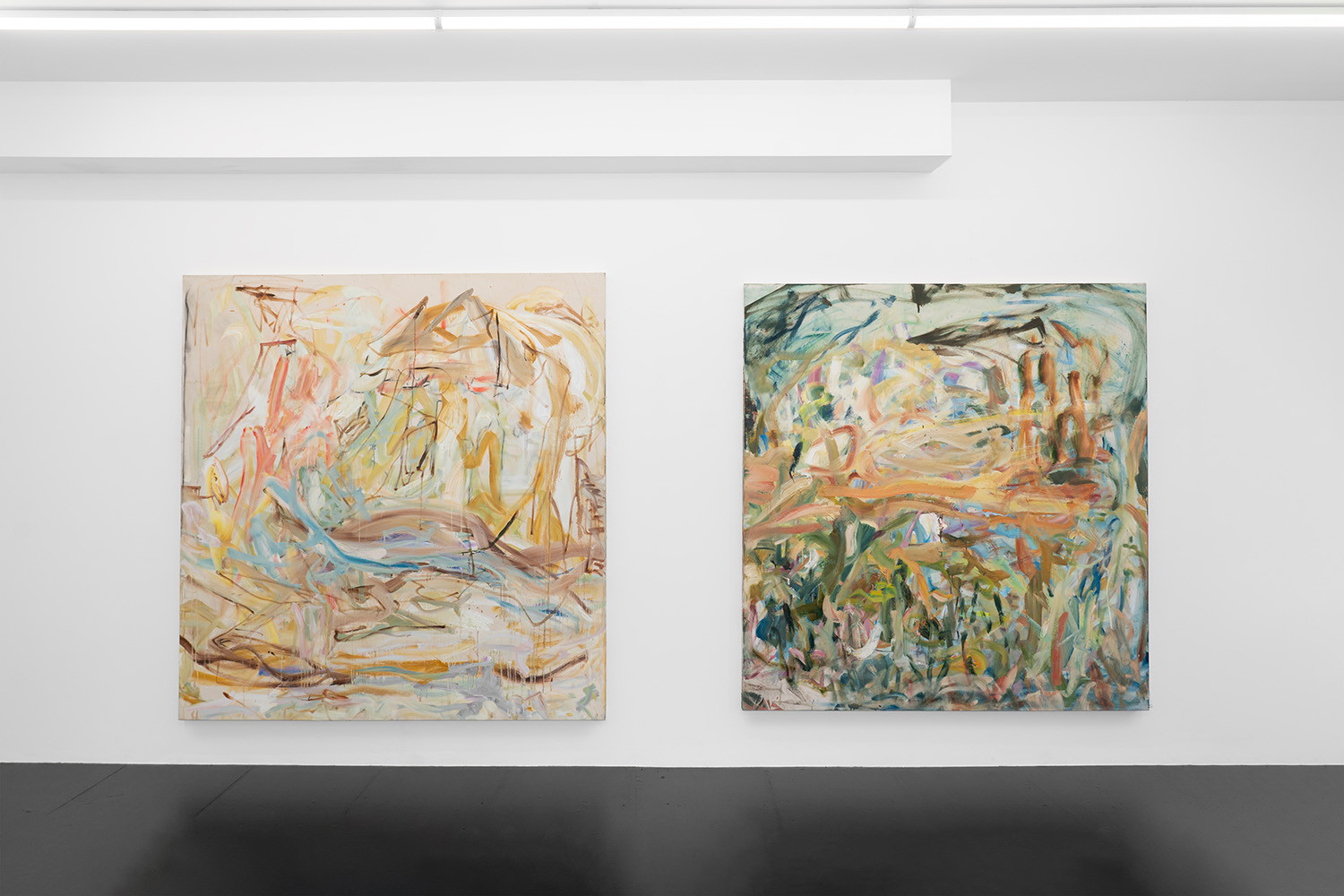Title of Article: ‘Takes on the Sublime’ @ Night Café
Writer: Hamish Strudwick
Sam Werkhoven, Gina Kuschke, and Alexandre Zhu have works shown in Takes on the Sublime, curated by gallery director Maribelle. Takes on the Sublime will be on view from January 28, 2025, until February 21, 2025.
The title of this show makes specific reference to the distinctly historical philosophy of Edmund Burke. The Sublime, a concept first articulated by Burke in 1757, has since shaped Romanticism, influencing Turner and Friedrich, Coleridge and Wordsworth, Shelley and Kant. Traditionally, the Sublime describes an encounter with the vast, the overwhelming, and the incomprehensible—something so immense it induces awe and terror in equal measure.
Romanticism finds its roots in this philosophy, expressing both the awe-inspiring and the terrifying power of nature. It is the unfathomable vastness of the universe that provokes fear and wonder in us, an emotional and cognitive response that Burke argued was pre-rational—an instinctive reaction that seizes us before reason can mediate our experience. This tension, between fear and exhilaration, pushes us to seek out the Sublime again and again, forcing us to grapple with forces beyond human control.
Yet in Takes on the Sublime, this concept undergoes a transformation. Rather than presenting the Sublime as an external, infinite expanse—as seen in the storms of Turner or the mountains of Friedrich—this exhibition turns inward. Here, the Sublime exists not in the grandeur of nature but within the unconscious mind, the fragmented nature of perception, and the instability of memory. In the age of Freud, awe and terror are no longer merely external forces; they reside within us, surfacing in dreams, repression, and subjective experience.
This shift is not simply a stylistic choice but a philosophical one. In these works, pictorial space collapses, horizons disappear, and external vastness is replaced by psychological depth. Where the Romantics sought to capture nature’s terrifying grandeur, Werkhoven, Zhu, and Kuschke present a Sublime that is intimate, introspective, and phenomenological. Rather than confronting the infinite, we confront ourselves.
Sam Werkhoven’s silhouetted foliage paintings evoke an eerie stillness, suffused with the melancholy of dusk. In Sabotage Lane and Demi Monde, painterly bushes emerge against murky blue grounds, while in Finest Hour #3, the glow of distant light is obscured by fog. Traditionally, twilight serves as a moment of transition—a time between knowing and unknowing, reality and dream. Werkhoven capitalizes on this ambiguity, using obscured light sources and softened edges to collapse the visual field. Rather than offering the viewer an expansive landscape to lose themselves in, he presents single branches instead of whole forests, pulling us into an inward contemplation. The vast external Sublime of the past is replaced with a Sublime of psychological uncertainty, where perception is clouded, and reality remains just beyond our grasp.
Alexandre Zhu’s monochrome graphite works take this disorientation even further. In Please turn off all electronic devices (2), we are presented with a tilted, unstable view from an airplane window—an unsettling vantage point where grounding is impossible. In Hadal (17), the impenetrable darkness of the sea dissolves into void-like opacity. These compositions reference the Romantic Sublime’s obsession with the ocean’s abyssal depths, yet Zhu denies us any sense of scale or spatial certainty. The viewer is not asked to gaze upon nature’s vastness but to confront their own psychological depths. Freud’s concept of the uncanny (das Unheimliche)—where the familiar becomes strange—permeates these works, transforming the traditional Sublime into an unsettling confrontation with the subconscious.
Gina Kuschke’s rhythmic abstract paintings introduce a different approach to this inward Sublime. In Valley of Dew, Girl Picking Seaweed, and Mother II, she mines personal memories and imagined forms, translating them into gestural landscapes that blur the boundaries between representation and abstraction. As the viewer’s eye traces the fragmented contours, familiar shapes—perhaps a reclining figure or a half-remembered dream—emerge from the composition before dissolving again. This process of ocular disentanglement mirrors Freud’s theory of free association, where the subconscious mind imposes meaning on ambiguous forms. Kuschke does not map a physical landscape but rather the shifting terrain of memory, identity, and perception.
Curator and gallery director Maribelle Bierens brings together three emerging artists who reinterpret the Sublime through a contemporary, psychological lens. Rather than the grandiose terror of nature, these works evoke a phenomenological Sublime, where perception itself becomes unstable, and the self is the primary landscape of exploration. Here, the Sublime is not something we gaze upon but something we experience—a confrontation with the fragmented, the unconscious, and the intangible depths of the human mind.
Curator and gallery owner Maribelle Bierens brings together three wonderfully talented emerging artists with the sensitivity of an art historian. In this show, the sublime, a romantic philosophical subject, and its traditional language of representation are turned inwards onto the interior realm of the mind.
Sam Werkhoven has a collection of silhouetted foliage paintings in this show. His painterly bushes are set against dusky hued grounds in blue or yellow.

